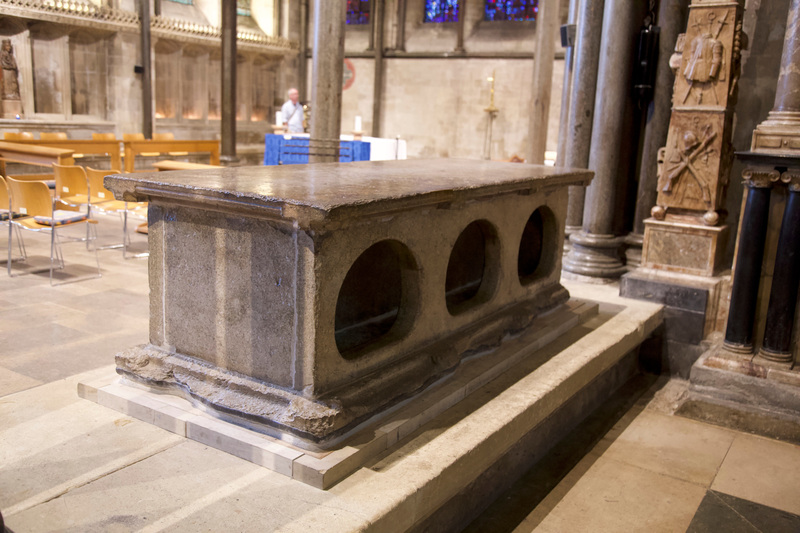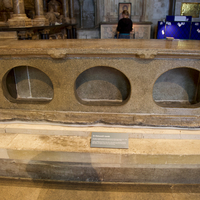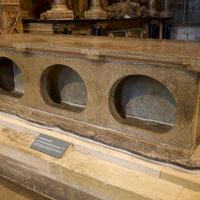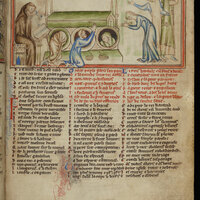St. Osmund's porthole tomb-shrine
Type:
Reliquaries,
Sarcophagi,
Shrines,
Tombs,
Illuminated manuscripts
Date:
Twelfth century
Location or Findspot (Modern-Day Country):
England
Medium:
Stone
Description:
St. Osmund (d. 1099) accompanied the Normans to England and may have been a relative of William the Conqueror. He became the first bishop of Salisbury Cathedral, and his liturgical reforms became the basis for later English liturgy. Osmund’s remains were venerated in a tomb-shrine in Salisbury Cathedral, where his body was translated in 1226. The (twelfth-century?) tomb-shrine has three “portholes” on each side, into which those seeking cures could insert an affected limb or their whole body. This increased their proximity to the relics
of the saint enclosed within. We can see such a tomb-shrine in action in a manuscript copied in England in the 1250s, in which pilgrims are being cured not by St. Osmund but by St. (formerly king) Edward the Confessor at Westminster. The snakelike coils at the base of the shrine are wax candles, called trindles.
“Porthole” tombs like these imitated the tomb of Jesus at the Holy Sepulcher in Jerusalem, which was remodeled in the eleventh century. After Osmund was officially canonized in 1457 his tomb-shrine became more elaborate, supporting a large superstructure. It was dismantled in 1539, during the Reformation under Henry VIII.
“Porthole” tombs like these imitated the tomb of Jesus at the Holy Sepulcher in Jerusalem, which was remodeled in the eleventh century. After Osmund was officially canonized in 1457 his tomb-shrine became more elaborate, supporting a large superstructure. It was dismantled in 1539, during the Reformation under Henry VIII.
Relevant Textbook Chapter(s):
8,
11
Repository and Online Resources:
• See all the pages in the Life of St. Edward the Confessor manuscript here.
Image Credits:
Linda Safran; Cambridge University Library, CC BY-NC 3.0




